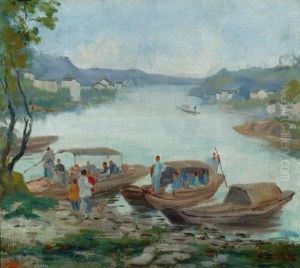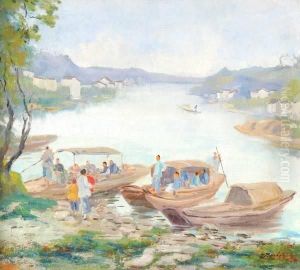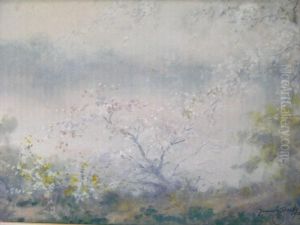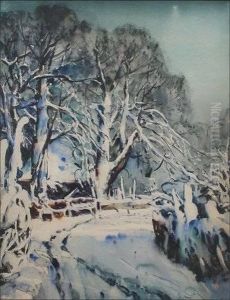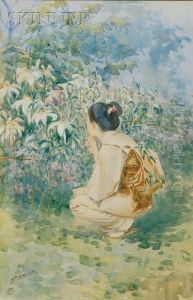Yamada Baske Paintings
Yamada Baske, born in 1869 in Japan, was a prominent figure in the world of Japanese art, particularly known for his contributions to the development of Western-style painting (Yōga) in Japan. His journey in art began in an era when Japan was undergoing significant cultural and political transformations, moving from the isolationist policies of the Edo period to the more open and modernizing Meiji era. This period marked the integration of Western techniques and perspectives into Japanese art, a fusion that Baske navigated with distinctive flair and innovation.
Educated initially in traditional Japanese artistic techniques, Baske's exposure to Western art forms ignited a passion for integrating these diverse aesthetics. His quest for mastery led him to travel extensively, notably to the United States and Europe, where he studied Western painting methods firsthand. This education enabled him to develop a unique style that bridged the gap between the Japanese and Western art traditions, making his work a testament to the cultural exchange between East and West during the Meiji and Taishō periods.
Upon returning to Japan, Baske became a pivotal figure in the art education system, advocating for the inclusion of Western art techniques in the curriculum. His efforts were instrumental in the establishment of art institutions that embraced both Japanese and Western artistic traditions, nurturing a generation of artists who would continue to explore and expand upon this cross-cultural dialogue.
Throughout his career, Yamada Baske's work received accolades both in Japan and internationally, showcasing his ability to convey the beauty and intricacies of the natural world through a blend of Japanese sensibility and Western realism. His paintings often featured landscapes and scenes of everyday life, executed with a precision and sensitivity that highlighted his dual heritage in the arts.
Baske's legacy is not only in his own artworks but also in his influence on the generations of artists who followed him. Through his teaching and his art, he played a crucial role in shaping the modern art movement in Japan, demonstrating the potential for harmony and innovation at the crossroads of different cultural traditions. Yamada Baske passed away in 1934, leaving behind a body of work that continues to inspire and influence the trajectory of Japanese art.
